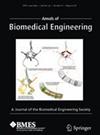Engineered Osteochondral Scaffolds with Bioactive Cartilage Zone for Enhanced Articular Cartilage Regeneration
Abstract
Despite progress, osteochondral (OC) tissue engineering strategies face limitations in terms of articular cartilage layer development and its integration with the underlying bone tissue. The main objective of this study is to develop a zonal OC scaffold with native biochemical signaling in the cartilage zone to promote articular cartilage development devoid of cells and growth factors. Herein, we report the development and in vivo assessment of a novel gradient and zonal-structured scaffold for OC defect regeneration. The scaffold system is composed of a mechanically supportive 3D-printed template containing decellularized cartilage extracellular matrix (ECM) biomaterial in the cartilage zone that possesses bioactive characteristics, such as chemotactic activity and native tissue biochemical composition. OC scaffolds with a bioactive cartilage zone were implanted in vivo in a rabbit osteochondral defect model and assessed for gross morphology, matrix deposition, cellular distribution, and overall tissue regeneration. The scaffold system supported recruitment and infiltration of host cells into the cartilage zone of the graft, which led to increased ECM deposition and physiologically relevant articular cartilage tissue formation. Semi-quantitative ICRS scoring (overall score double for OC scaffold with bioactive cartilage zone compared to PLA scaffold) further confirm the bioactive scaffold enhanced articular cartilage engineering. This strategy of designing bioactive scaffolds to promote endogenous cellular infiltration can be a much simpler and effective approach for OC tissue repair and regeneration.

 求助内容:
求助内容: 应助结果提醒方式:
应助结果提醒方式:


